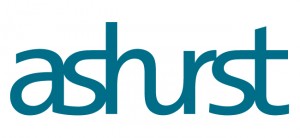6 February, 2018
Non-assistance clauses in settlement agreements
When settling a dispute with only one of multiple parties, it is common to include a "non-assistance" clause that restricts the settling party from assisting other parties to the dispute. However, recent cases indicate that professional conduct rules, public policy and case management considerations may limit the enforceability of such a clause, especially where it would have the effect of preventing a witness from discussing relevant evidence with remaining parties to the litigation.
In Commonwealth v Sanofi [2017] FCA 382, the Federal Court refused to enforce a clause of a settlement deed that restricted a party which had compromised its claims from assisting other litigants. Justice Nicholas held that the clause had a tendency to interfere adversely with the administration of justice and was unenforceable in so far as it prevented a party from releasing witnesses or prospective witnesses from any obligation of confidentiality in respect of information relevant to a claim.
For more information, see our Dispute Resolution Update dated 14 June 2017.
Federal Court endorses application to obtain overseas documents
§1782 of Title 28 of the United States Code allows a party to legal proceedings outside of the United States to apply to a US court to obtain evidence for use in the non-US proceeding.
In May 2017, the Federal Court delivered judgment in Lavecky v Visa Inc [2017] FCA 454 endorsing an application to obtain documents from three overseas entities under §1782. In contrast with Jones v Treasury Wine Estates [2016] FCAFC 59, where an anti-suit injunction was granted restraining an application under §1782 as an abuse of process, the endorsement in this case was sought before the plaintiff made an application to the US court. It is the first time that such an endorsement has been sought in Australia, and the Court stressed the importance of parties seeking an endorsement from the Australian court before making an application to the US court.
In considering whether or not to endorse the application, the Court considered a list of factors, including the importance of the material to the case, whether the cost was proportionate, and the delay to the preparation of the matter for trial in Australia.
The Court was satisfied that, although the application would be expensive and somewhat prolong Australian proceedings, the material was sufficiently significant and the application was a proportionate response. The Court also recognised that there were no other reasonable methods available for obtaining the material sought. As such, the Court endorsed the application, but required the applicants to provide the respondents with the proposed application and supporting material prior to filing in the US court.
Objection, hearsay! The admissibility of screenshots and search results
Screenshots of webpages and internet searches may appear to support points of argument made in commercial disputes. However, such evidence may well be inadmissible as evidence in Court on the grounds that it is hearsay or of low probative value, particularly where no opportunity to cross-examine witnesses on the content of the screenshots is afforded.
The Federal Court judgment in Shape Shopfitters Pty Ltd v Shape Australia Pty Ltd (No 2) [2017] FCA 474 addresses the admissibility of webpages and search results. Shape Shopfitters alleged that by using the word "SHAPE" in its corporate name, marketing and advertising, Shape Australia had falsely represented that there was a relationship between it and Shape Shopfitters. Shape Shopfitters brought various claims against the respondent. In defending the claims, the respondent sought to rely on an affidavit of Mr Henry, which deposed to a number of internet searches he conducted for business names containing the word "shape" and exhibited a series of screenshots of webpages which constituted the results of those searches.
Justice Mortimer held that the evidence sought to be adduced by Shape Australia was hearsay within the meaning of s 59 of the Evidence Act 1995 (Cth), as the statements made on the internet sites constituted previous representations made by the persons who constructed the websites. The respondent was seeking to use those websites to prove the actual existence of those business entities as well as specific details of those entities such as the names they were using and their locations. Her Honour found that this evidence was intended to support the respondents' submission that there was no confusion in the marketplace generated by its use of the word "shape", a hearsay purpose.
Post Shape Shopfitters, parties relying on the use of screenshots from websites, including from the "Internet Archive WayBack Machine", should be aware that such evidence is likely to be ruled inadmissible. Care should be taken in using such evidence in forums where the rules of evidence are strictly applied.
Please click on the image to enlarge.
Source: Federal Court of Australia Annual Report 2016–17
For further information, please contact:
Andrew Carter, Partner, Ashurst
andrew.carter@ashurst.com






